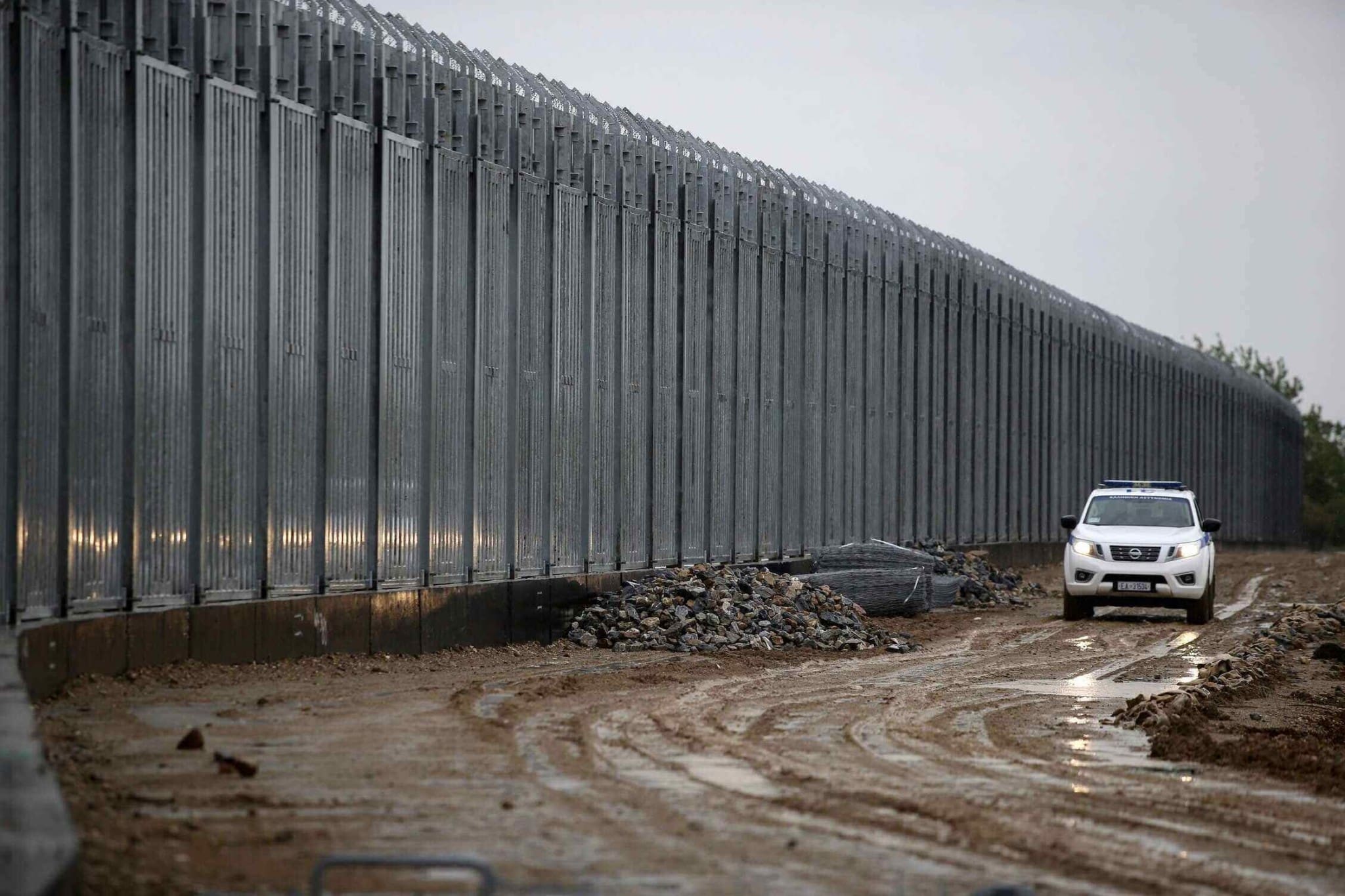A massive barbed wire fence winds its way for 40 kilometers around Greece’s Evros River, which serves as the country’s border with Turkey. The recently completed barrier also features an electronic surveillance system, and has been erected at a time when Athens is deeply concerned about an unmanageable wave of immigration triggered by the unexpectedly rapid takeover of Afghanistan by Islamic militants of the Taliban.
European officials, who do not yet have a credible plan on what to do about the situation in Afghanistan, are not criticizing the Greeks’ border wall construction. This is in contrast to the European mainstream’s stance nine years ago, when its construction began, and also starkly contrasts to the strong backlash Hungary faced when it set up barriers against immigrants six years ago.
Today, everything is different.
Greece is not the only one to recently begin to add to the plethora of border walls and fences that have gone up around Europe in recent years. Lithuania is also preparing to build a fence to prevent another influx of refugees from Belarus. Brussels even said it was a “good idea”.
However, Lithuania should not count on European funds because “they cannot be used to finance barriers”.
Many Afghans are already living in Europe. In the last 10 years, about 630,000 of them have applied for asylum in 27 European countries.
But this was at a time when the Western Allies were helping the impoverished country and there was relative peace. That is all gone now. Currently, there are reports that strong waves of migration will be set in motion, with some who fear the Taliban taking flight to Europe while others will be seeking economic opportunity. Many expect hundreds of thousands of Middle Eastern migrants to quickly come, just as the Syrians did when they arrived at the Greek border six years ago.
Specific proposals are still in the works
According to German politicians, for example, the Christian Democrats’ candidate for chancellor, Armin Laschet, this must not happen again. French President Emmanuel Macron also assured that “Europe must protect itself against a sudden wave of migration”.
However, concrete proposals for helping Afghanistan and its neighbors are still emerging.
There is not much time as waves of potential migrants have attempted to make their way to Kabul Airport to exit the country.
Greek politicians are closely following the rapid development and show that they do not want to become a gateway to Europe again.
“We cannot passively wait for the results,” said Greek Minister for Citizens’ Protection Michalis Chrisochoidis.
Neighboring Turkey, which still hosts millions of fugitive Syrians on its land, has similar concerns. It has already built a fence on the border with Iran, which protects a third of the 540-kilometer-long common border.
Turkey has tense relations with Greece, otherwise a NATO partner. Ankara has used immigration several times as a source of pressure on its European neighbors but shared fears this time led it to use a constructive tone.
Turkish President Recep Tayyip Erdogan has said that support should be given to both Afghanistan and neighboring Iran, otherwise a new wave of migration is “inevitable.”
European politicians agree. For example, Austrian Interior Minister Karl Nehammer is advocating the creation of large migration centers in countries bordering Afghanistan.
“We must try to keep most of those people in their region,” Nehammer said.
Different stance on barriers than six years ago
But if efforts to help in countries where immigration gains ground fail, Europe does not have many ways other than building new fences. There is a consensus that the reception of more than a million refugees six years ago was a one-off solution that is difficult to repeat. The European social system is at the end of its rope, and there are unavoidable security risks. Many agree, except those of the Green parties and the radical left, that only those who meet strict asylum conditions can be accepted.
That is why Europe has a different view of new fences than a few years ago. When the first part of the Greek wall began to be built by the Evros River in 2012, criticism came from Western Europe. For example, Allen Leas of the Brussels Refugee Council spoke of “tragedy” and “human rights violations”.
Six years later, when the refugee crisis culminated and Hungary began building fences on its southern border, which is also the external border of the Schengen area, criticism was heated.
But the neighbors later built their own fences, seeing no other option. Traffic on the Balkan route decreased many times in the following years.
Europe is also building barriers in other regions where it is fighting the wave of refugees. For many years, Moroccan youths have been climbing high fences in the Spanish enclaves of Ceuta and Melilla. Lithuania is recently interested in supplies of barbed wire.
The construction of a barrier has proven to be an attractive solution around the world, from Israel to the Mexican-American border. Barriers also separate Saudis and Kuwaiti from Iraqi neighbors, and fences have also gone up between Malaysia and Thailand as well as the Indo-Pakistani border.
Title image: In this Friday, May 21, 2021 file photo, a police car patrols alongside a steel wall at Evros river, near the village of Poros, at the Greek -Turkish border, Greece. Greece’s prime minister and Turkey’s president are to speak Friday evening, Aug. 20 to discuss “the latest developments in Afghanistan.” Both countries are raising concerns about facing a potential major influx of people fleeing Afghanistan after the Taliban’s takeover. (AP Photo/Giannis Papanikos, File)






